Scars Remaining
Schools gradually reopened after September 1. As the Wartime Casualties Care Law provided relief stations only two months, most of the stations were closed on October 5. However, the wounds inflicted by the atomic bombing were not easily healed. Buildings destroyed by the bomb blast or fire remained essentially unchanged, and injured victims still sought treatment regularly. Even in September, bodies were still being cremated in the open.
| Two or Three Months after the Bombing | |
|---|---|
 Former bank area near the hypocenterNovember Saiku-machi Near the hypocenter |
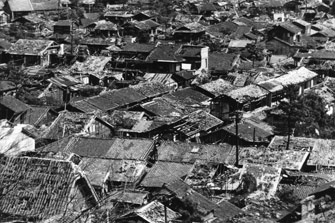 Dambara DistrictAlthough the Dambara District was blocked from the bomb blast by Hijiyama Hill, there were still many homes that were partially destroyed. |
| Survey of A-bomb Damage | 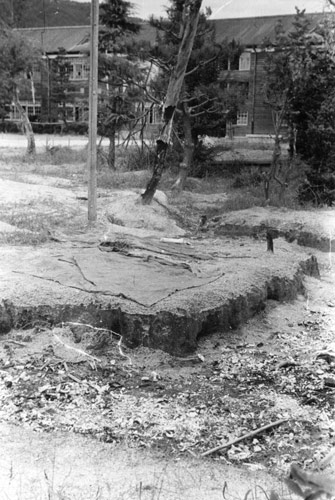
Kusatsu Elementary SchoolKusatsu Elementary School, which suffered little damage, was used as a relief station from immediately after the bombing, and at one time housed over 3,000 wounded people. The bodies of the deceased who had no one to take them away were cremated in a hole dug in the school yard. Even two months after the bombing, one can see a scattering of white pieces of bone in the place where the cremations had taken place. Schools in the city gradually reopened from September, but there were places where the remains of cremations were still visible. |
|---|---|
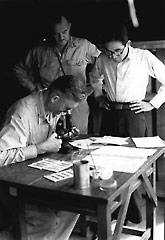 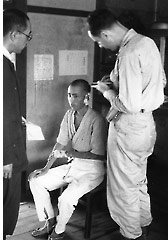 Survey at the Hiroshima First Army Hospital Ujina BranchA survey team from the United States came to Hiroshima in September to survey the damage from the bombing. Dr. Masao Tsuzuki of Tokyo Imperial University accompanied them. |
|
| Treatment Continues | |
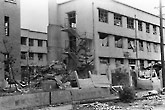 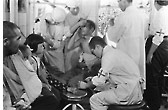 Hiroshima Red Cross HospitalAlthough Hiroshima Red Cross Hospital's buildings were destroyed by the bombing, the hospital took in and treated many wounded people from immediately after the bombing. Treatment was continued there even after the temporary relief station had been closed. |
